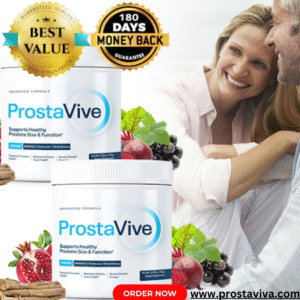The Ultimate Guide to Building Trustworthy Content: A Deep Dive into Google’s EEAT Guidelines
In the digital age, content is not just about conveying information; it’s about building trust and establishing authority. Google’s EEAT...

In the digital age, content is not just about conveying information; it’s about building trust and establishing authority. Google’s EEAT (Experience, Expertise, Authoritativeness, and Trustworthiness) guidelines have reshaped how we approach content creation. This article will walk you through what EEAT means, why it matters, and how to apply it effectively in your content strategy.
What is EEAT and Why Should You Care?
EEAT is a critical part of Google’s Search Quality Evaluator Guidelines. The acronym stands for:
- Experience – The firsthand knowledge or personal experience the content creator brings to the table.
- Expertise – The level of knowledge and understanding the creator demonstrates in a specific field or subject.
- Authoritativeness – The reputation and recognition the creator, website, or content holds within a particular industry.
- Trustworthiness – The credibility and reliability of both the content and the website it’s published on.
Experience: How to Show It in Your Content
One of the most significant ways to build trust with your audience is by showcasing your experience in the subject matter. Google values content that reflects genuine, hands-on knowledge. This can be achieved through:
- Personal anecdotes and case studies: Sharing real-world experiences helps establish credibility. For example, a blog post about digital marketing strategies would benefit from an author sharing results from their campaigns.
- Detailed explanations: Offering in-depth, nuanced insights, rather than just surface-level information, shows that you have practical expertise in the field.
Expertise: Establishing Authority in Your Niche
When it comes to content creation, expertise is paramount. Google looks for content created by individuals with a deep understanding of the subject matter. If you want to prove your expertise:
- Cite credible sources: Referencing reputable studies, research papers, or experts in your field strengthens the perception of expertise. This isn’t just about providing information but about showing your knowledge is backed by established sources.
- Use clear, precise language: Experts communicate in a way that is both accessible and technical. Avoid fluff and focus on the details that matter most.
- Create comprehensive content: High-quality, long-form content that covers a topic in depth demonstrates your command over the subject. Google ranks well-researched, thorough articles higher because they offer more value to the reader.
Authoritativeness: Building a Recognized Reputation
Authoritativeness refers to how authoritative you are in your industry or niche. It’s not just about having knowledge but being recognized for it by others in your field. Building authority involves:
Establishing Your Brand as a Trusted Source
- Consistent content: Regularly publishing high-quality content on a particular topic helps build recognition. Over time, your site or blog will be viewed as an authority on that subject.
- Get featured by others: Being cited by respected websites, blogs, or publications adds to your authority. If other reputable sources link to your content, Google sees this as a signal that you’re an authority in your space.
- Expert endorsements: Guest posts, interviews, or collaborations with industry leaders can also bolster your authority. The more respected voices that vouch for your content, the more authoritative you appear to Google.
Trustworthiness: How to Gain and Maintain It
Trust is the cornerstone of any lasting online presence. If users don’t trust your content, they won’t engage with it, and Google will recognize this, potentially affecting your rankings. Here’s how to build trust with your audience:
- Transparency: Always provide clear, accurate, and verifiable information. If you’re sharing statistics or data, make sure to link to the original sources. If you’re discussing a controversial topic, ensure your content reflects multiple viewpoints.
- Secure and professional website: Ensure that your website is secure (HTTPS) and free from intrusive ads or pop-ups. Google considers the user experience on your website, and a site that’s easy to navigate and trustworthy will rank higher.
- Clear author information: Providing a clear bio of your content creators, along with their credentials and relevant background, adds to the trustworthiness. If possible, link to their social profiles, work history, or any other credentials that can validate their expertise.
The Role of Content Quality in EEAT
Google’s primary goal is to serve users the best possible content for their queries. When you focus on creating high-quality content, you inherently align with Google’s EEAT guidelines. Here’s why quality matters:
- Depth and originality: Google rewards content that provides unique, original insights over content that rehashes existing ideas. It’s not just about writing more; it’s about writing better.
- User intent: Content should address the needs and concerns of your audience. Google’s algorithms are increasingly sophisticated at determining if content matches user intent. Ensure your content provides value, answers questions, and solves problems.
- Engagement signals: Google tracks how users interact with your content. High-quality content that encourages users to stay on your page, share, or comment is likely to rank higher.
How to Create EEAT-Optimized Content
Creating content that aligns with Google’s EEAT guidelines doesn’t happen overnight. Here’s a step-by-step guide to ensure your content meets the highest standards:
Step 1: Research Thoroughly
Before you write, understand what your audience needs. Use tools like Google Search Console, keyword research tools, and competitor analysis to understand the queries people are searching for. This research will guide your content creation process, ensuring you target the right topics and answer the most pressing questions.
Step 2: Write for the User, Not the Algorithm
While SEO is essential, never lose sight of your audience. Write content that is informative, valuable, and engaging. Focus on creating a positive user experience, and the algorithm will reward you.
Step 3: Optimize Your Content
After you’ve created high-quality content, optimize it for search engines without compromising readability. Use targeted keywords naturally, optimize for mobile devices, and ensure fast loading times.
Step 4: Promote Your Content
Once your content is published, promote it across social media channels, newsletters, and other platforms to increase its reach. The more people engage with and share your content, the more authoritative Google perceives it.
Conclusion
Creating content that adheres to Google’s EEAT guidelines is not only beneficial for SEO but is also critical for building long-term trust with your audience. By focusing on experience, expertise, authoritativeness, and trustworthiness, you will not only improve your content’s performance in search rankings but also enhance your brand’s reputation in the eyes of both users and search engines.
Follow these strategies, stay consistent, and ensure that your content provides real value, and you’ll be well on your way to building a content strategy that resonates with both Google and your audience. If you’re looking for expert guidance, partnering with a branding agency Cary or an SEO agency Cary, NC can help you tailor your content and optimize it for success







